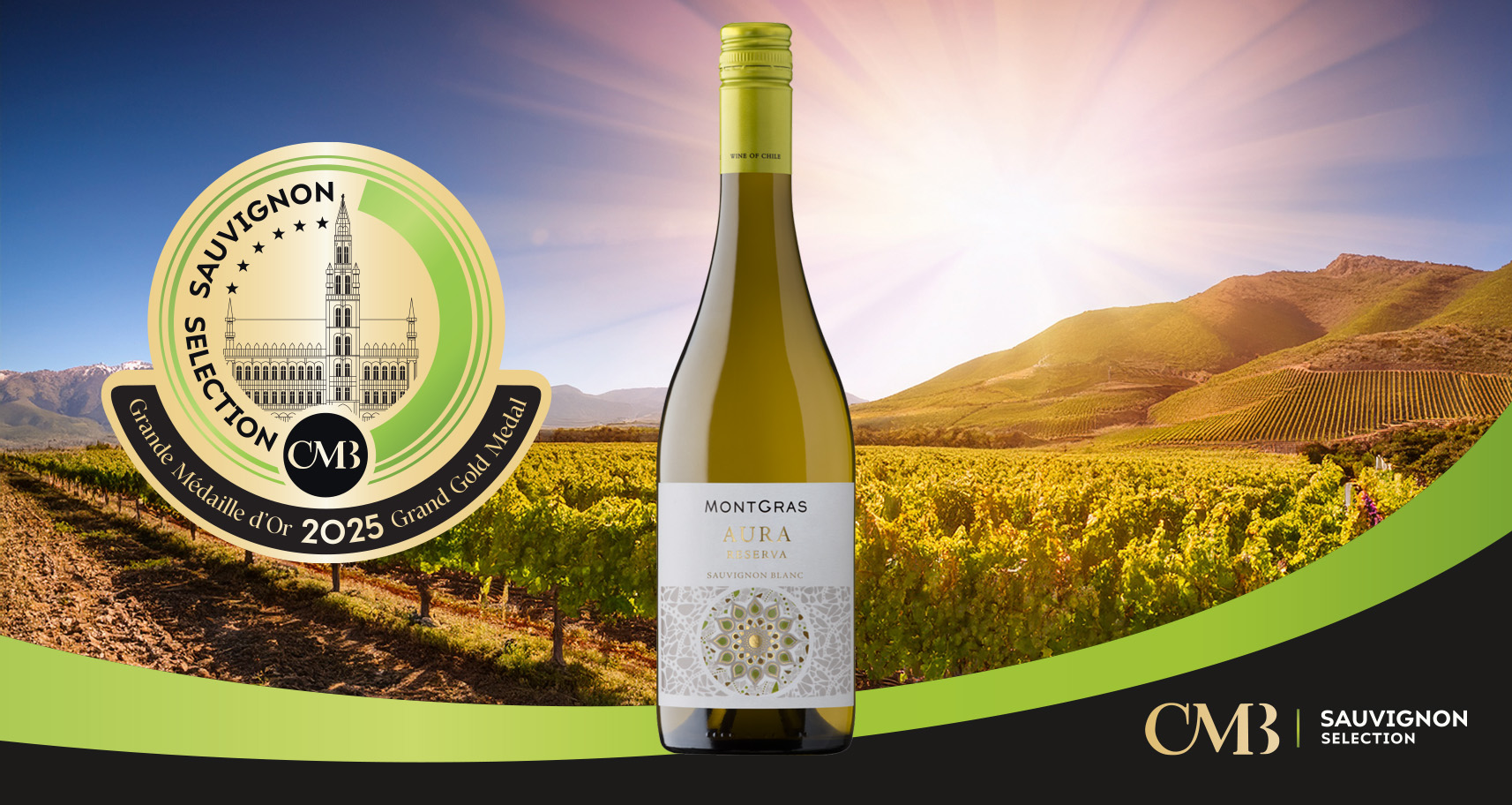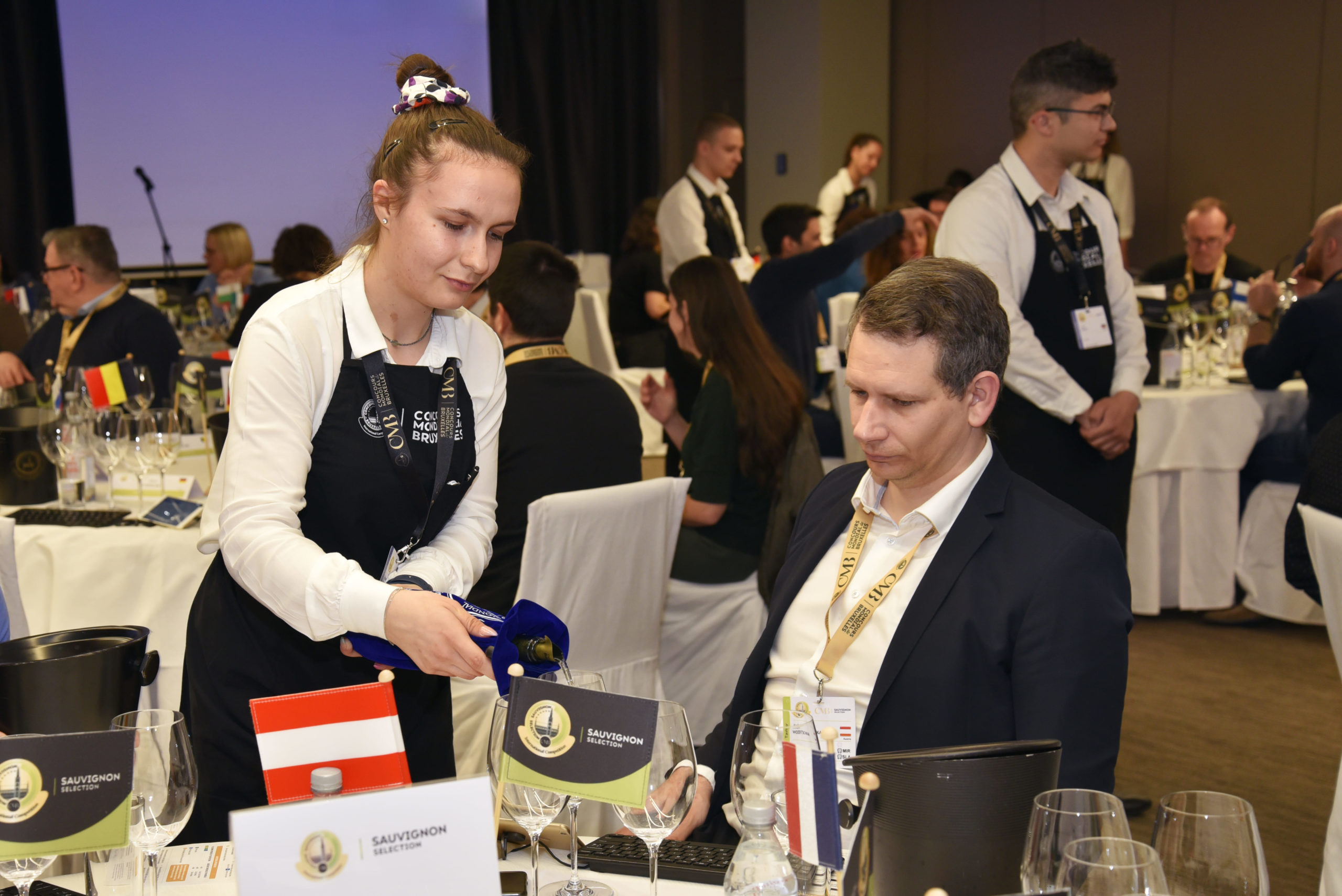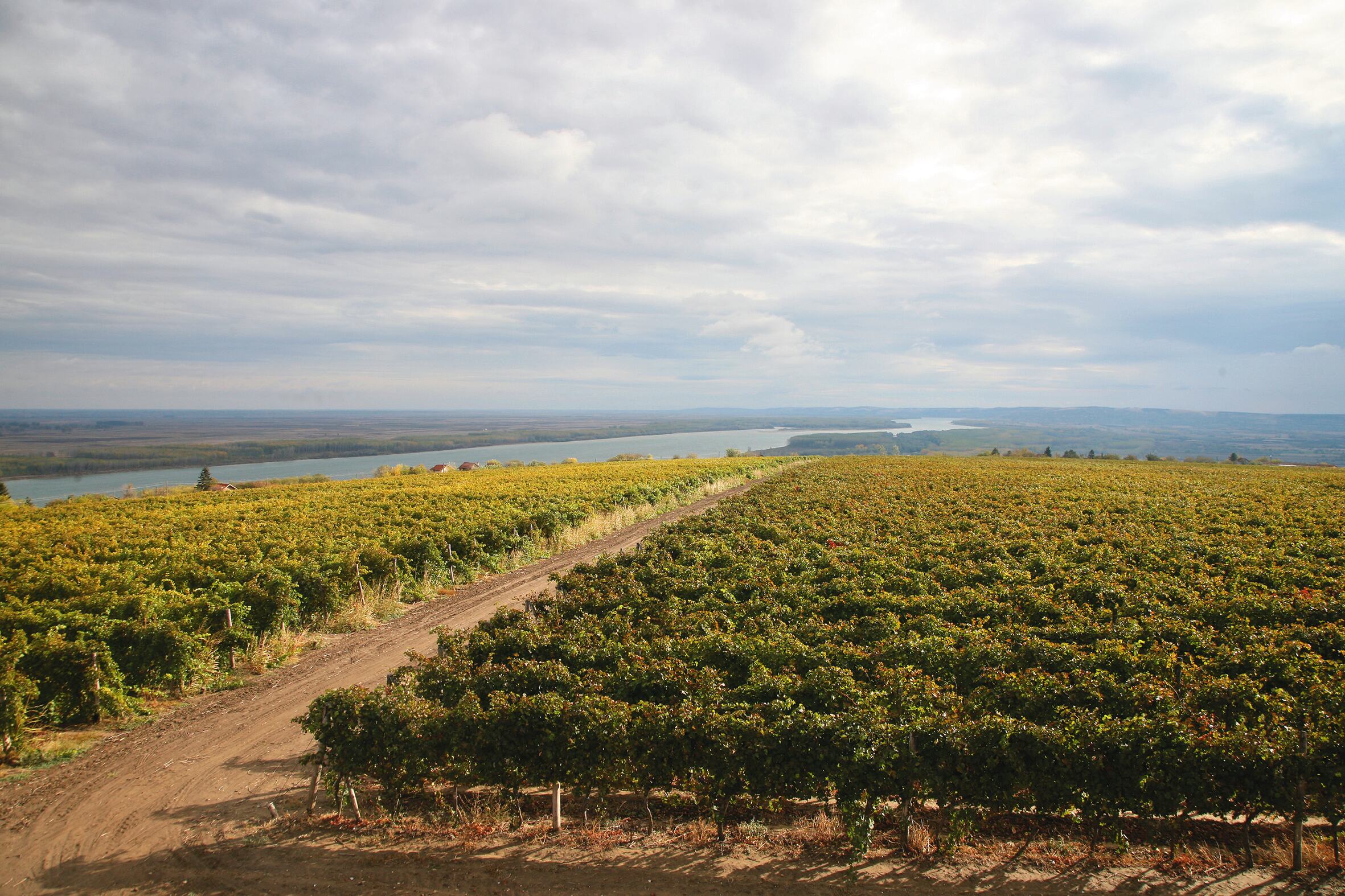Introduction to France & Centre-Loire Valley
INTRODUCTION TO FRANCE
Sauvignon blanc is the third most planted white wine grape variety in the world, covering 123,000 hectares. It ranks after Airen (218,000 hectares, used mainly for producing brandy) and Chardonnay(210,000 hectares), its main rival, although the pace of growth for Chardonnay has slowed. The 15th most planted vitis vinifera variety in the 1990s, Sauvignon hasnow risen to 8th place, with acreage rising by over 3% in the last 15 years.
The world cannot seem to sate its thirst for Sauvignon blanc, a variety whose delicate aromatic spectrum and freshness appeal to consumers. French examples offer an archetypal rendition of Sauvignon that slots right into the current wine zeitgeist favouring light, palatable offerings driven by a lively acidic structure and a multi-faceted array of aromas.
REGIONAL DISTRIBUTION AND ORIGINS
In France, Sauvignon blanc covers 29,900 hectares and is the 10th most planted variety across the colour spectrum, and the third most widespread white grape in the country. It represents 3.7% of total French vineyard acreage, but covers much larger areas in Languedoc-Roussillon (29% of France’s Sauvignon blanc), the Loire (27% of the region’s white grape varieties) and Bordeaux (45% of the region’s white grape varieties). The Loire and Gironde, its two original French homes, often compete for its relatively blurred geographical origins. Several documents claim it originated in Gironde, where it is mentioned at the turn of the 18th century. However, the Loire seems to be able to lay claim to much older written evidence – it was featured in Rabelais’ masterpiece ‘Gargantua’ in 1534, where it is referred to by its synonym ‘fiers’ in chapter 25. It is mentioned again in Sancerre and Pouilly, the heart of the Centre-Loire Valley region, more than two centuries later, in 1784, under its other synonyms ‘Sauvignon fumé’ and ‘Blanc fumé.’ Its DNA also leans more favourably towards its Loire origins, as one of its parents is Savagnin, whose name was mentioned in the Middle Ages. It is therefore part of a family that includes, among other varieties, Silvaner, Verdhelho and Grüner Veltiner, grapes it can sometimes be mistaken for. Similarly, its DNA reveals a connection with Chenin blanc and Trousseau. Its etymology further corroborates this theory – ‘Sauvignon’ stems from ‘sauvage’ or wild in French, a moniker that alludes to its leaves, which are uncannily similar to those of a wild vine. Its older synonyms, referred to in the Loire as ‘Fié’ or ‘Fiers,’ are derived from the Latin ‘Ferus,’ meaning «that which is wild». From here, it allegedly spread to Gironde then spontaneously coupled with Cabernet Franc to birth Cabernet-Sauvignon.
VINE PHYSIOLOGY
Sauvignon blanc has medium budbreak, it flowers fairly early and is a mid-ripening variety. It is not very productive, but shows a lot of vigour. The growth of its canopy needs to be reined in as it can spread very quickly on over-rich soils. It therefore prefers poor, hard soils, which come in plentiful supply in France. Its small, compact, cone-shaped berries are very prone to powdery mildew, black rot, downy mildew and grapevine trunk diseases. It is also very sensitive to botrytis, which can be a disadvantage, but is also an advantage as it is used to make the great sweet noble rot wines of Bordeaux.
 One of Sauvignon blanc’s outstanding features is its ability to show sense of place, which is why its aromatic profile can vary depending on the place where it is grown. Particularly easily to single out in blind tastings, it stands out for its substantial freshness, its citrus notes (lemon, grapefruit, orange), white flowers (lime, iris) and vegetal notes (boxwood, cut grass) in cooler climates. Its herbaceous notes, which can be very pronounced, particularly in the Centre-Loire Valley, stem from its methoxypyrazine compound, which occurs in varying degrees in the wines depending on the temperature, the ripeness of the fruit at harvest, their exposure to light and vine vigour. In sunnier vineyard sites, tropical notes (passion fruit, pineapple) often prevail and accompany pink grapefruit aromas which are ascribed to the volatile thiols formed after alcoholic fermentation. They also show varying degrees of intensity depending on the vineyard site, the vintage and vineyard management.
One of Sauvignon blanc’s outstanding features is its ability to show sense of place, which is why its aromatic profile can vary depending on the place where it is grown. Particularly easily to single out in blind tastings, it stands out for its substantial freshness, its citrus notes (lemon, grapefruit, orange), white flowers (lime, iris) and vegetal notes (boxwood, cut grass) in cooler climates. Its herbaceous notes, which can be very pronounced, particularly in the Centre-Loire Valley, stem from its methoxypyrazine compound, which occurs in varying degrees in the wines depending on the temperature, the ripeness of the fruit at harvest, their exposure to light and vine vigour. In sunnier vineyard sites, tropical notes (passion fruit, pineapple) often prevail and accompany pink grapefruit aromas which are ascribed to the volatile thiols formed after alcoholic fermentation. They also show varying degrees of intensity depending on the vineyard site, the vintage and vineyard management.
Some of Sauvignon’s synonyms: Sauvignon, Blanc Fumé, Fume, Muscat Sylvaner, Sauvignon, Sauvignon Vert, Pinot Mestny Bely, Sauvignon Verde, Zeleni Sauvignon, Sauvignonasse, Muscat Sylvaner, Fumé Blanc, Weisser Sauvignon, Sovinjon Bel, Sauvignon Bianco, Sovinjon Bijeli, Sovinjon, Muškatni Silvanac, Sauvignon Bijeli, Sauvignon Blanco.
![]()
THE LOIRE
Across the Loire Valley, Sauvignon blanc is the second most planted grape variety (28%) after Melon de Bourgogne and ahead of Chenin blanc (27%), covering 9,912 hectares of vines.
CENTRE-LOIRE VALLEY
In the aftermath of the phylloxera crisis, at the turn of the 20th century, vineyards in the Centre-Loire Valley region were replanted with Sauvignon blanc as their focus, replacing Pinot noir. It gained its regional pedigree and has reigned supreme here ever since. It covers 80.9% of vineyard acreage and is at the core of six appellations: Sancerre, Quincy, Coteaux du Giennois, Menetou-Salon, Reuilly, Pouilly-fumé & Pouilly-sur-Loire, which enjoy a continental climate with a strong ocean influence.
AOC Sancerre, a small 15 km triangle, boasts 3,000 hectares of vines planted on an extraordinary layering of soils spanning 15 geological periods. Sauvignonrepresents 80% of vineyard area. It is planted on three main types of soil, although in
the past, winegrowers have listed more than 350 contrasts translating to a commensurate number of named vineyards that have been recognised but are notclassified as crus. The soil types are:
- ‘caillottes’: chalky soils with limestone fragments that yield traditional, clean Sancerre wines displaying citrus and freshly-cut grass aromas.
- ‘terres blanches’: clay-limestone soils very rich in marine fossils. These provide the usual basis for single-vineyard wines with incisive freshness and marked minerality, occasionally showing a saline touch on the palate.
- Clay-silica: here, the flint-rich soils lend the wines distinctive flinty notes.
AOC Pouilly-Fumé and Pouilly-sur-Loire cover 1,342 hectares. Pouilly-Fumé produces only Sauvignon-based white wines, locally called Blanc-Fumé becauseof the thin layer of bloom that covers the grapes before harvest. The limestone and clayey limestone soils, sometimes rich in flint, the western aspect and proximity to the Loire create a milder climate and lead to higher concentration in the wines, with notes of grapefruit and broom; they do retain minerality and freshness, however.In Pouilly-sur-Loire, Chasselas ranks first, sometimes supplemented by a modicum of Sauvignon blanc.
Menetou-Salon is another well-known French appellation. Its soils are characteristically consistent and formed of limestone sediments, very rich in oyster fossils,covered with 602 hectares of vines. Menetou-Salon wines are balanced and fresh
with aromas of citrus, stone fruit, white flowers
and spices, as well as the occasional distinctive menthol hint.
Quincy is probably one of the oldest vineyards in the Loire. Today it has nearly 300 hectares of vines planted entirely to Sauvignon blanc on terraces along theplateau overlooking the Cher valley, home to gravel and sand soils. The grape variety
is said to have been brought from the female Beauvoir Abbey by monks from the Order of Citeaux. The light, sun blessed soils contain varying degrees of clay andyield compelling Sauvignon blanc wines showing notes of grapefruit, boxwood, acacia and menthol.
Reuilly is a small, 279-hectare appellation which produces wines in three colours, and yields ripe Sauvignon blancs with herbal notes (blackcurrant bud, lime blossom) and floral aromas on limestone marl soils, above which are sun-soaked sand and gravel terraces.
Finally, Coteaux du Giennois, which only covers 195 hectares (although the area is growing apace), has silica and limestone soils and produces supple and very harmonious Sauvignon blancs delivering aromas of white flowers and quince paste.
Aside from a few nuances and the unique signature style of each winegrower, the wines from these appellations are produced in a fairly similar way. After the harvest, the fruit is pressed very gently to extract the juice without the astringency from the pips and skins. The must is settled, i.e. clarified, before alcoholic fermentation, which is mostly carried out in stainless steel tanks at a cool temperature of between 18 and 22°C. Lengthy fermentation, harnessed by refrigeration, extracts Sauvignon blanc’s subtle, delicate aromas and preserves its inherent freshness. The wines are left on fine lees which are removed at bottling, and are not oaked. They can be marketed immediately after bottling or a few months later for the most complex examples.
Export rates vary from one appellation to the next. Sancerre, which has become a household name and is in high demand internationally, exports the vast majority of its wines, particularly to the United States (65%), followed by Pouilly, which exports almost half of its output (46%). Other Centre- Loire Valley appellations, however, have a strong domestic focus (85% for Menetou-Salon, 92% for Quincy, 88% for Reuilly and 73% for Coteaux du Giennois).
Gabrielle Vizzavona
Every month, a different producer country will be featured, from the classics such as France and New Zealand to more unexpected destinations such as Austria or Spain. For the next one, we stay in France with Touraine and Bordeaux.


